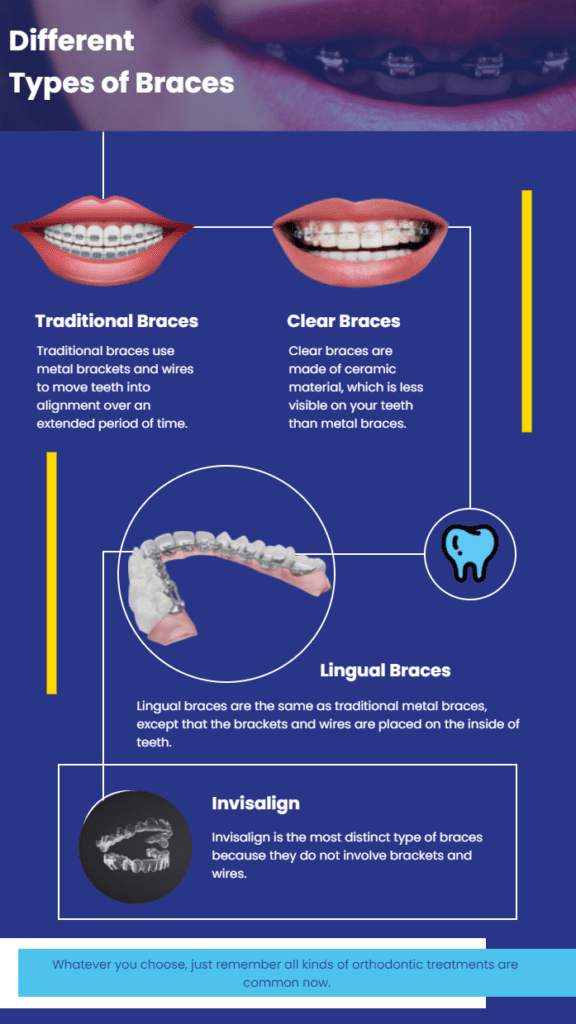How Cumming Orthodontics Addresses Common Braces and Invisalign Problems
Wiki Article
Comprehensive Overview to Orthodontics Procedures for Dealing With Oral Misalignments
In the realm of orthodontics, the journey to accomplishing a completely straightened smile includes a myriad of treatments customized to fix dental misalignments. From typical dental braces to unnoticeable aligners and even medical alternatives, the field of orthodontics supplies a range of options to deal with varying levels of dental irregularities. Recognizing the details of each procedure, including their devices, benefits, and possible disadvantages, is vital in making informed decisions about one's orthodontic therapy. As we browse through the detailed guide to orthodontic procedures for fixing dental misalignments, the intricate details of each approach will unfold, dropping light on the path towards a practical and unified dental positioning.Orthodontic Procedures Introduction

In enhancement to clear aligners and standard dental braces, orthodontists might likewise recommend various other treatments like headgear, palatal expanders, or retainers to deal with specific placement problems (cumming invisalign). These procedures are customized to each client's one-of-a-kind requirements and might entail a mix of therapies to achieve the wanted results. Normal adjustments and tracking are vital parts of orthodontic treatment to make sure progress is on track and to make any kind of necessary modifications along the road. By undertaking orthodontic procedures, patients can not only achieve a straighter smile however additionally boost their total oral health and function.
Typical Dental Braces: Exactly How They Function
When thinking about orthodontic therapies for dental imbalances, typical dental braces stand out as a reliable technique for dealing with teeth placing. Standard dental braces are composed of brackets, cords, and bands that function with each other to apply continual stress on the teeth, slowly relocating them right into the wanted placement.
As pressure is applied to the teeth with the braces, the bone surrounding the teeth is improved to sustain the new tooth settings. Individuals will require normal adjustments at the orthodontist's office to ensure the dental braces proceed to apply the correct pressure for efficient teeth motion.
Undetectable Aligners: Pros and Cons
These clear, customized trays are basically unnoticeable when put on, making them an attractive alternative for people looking for an extra cosmetically pleasing orthodontic therapy. Clients can get rid of the aligners before consuming or cleaning their teeth, decreasing the threat of food obtaining stuck in the home appliance and simplifying the cleaning procedure.
Surgical Orthodontic Options
Surgical treatments in orthodontics existing practical alternatives for addressing intricate dental misalignments that might not be properly solved with conventional orthodontic treatments. While typical braces and unnoticeable aligners can remedy lots of orthodontic issues, particular situations need surgical intervention Learn More Here to attain optimum results. Surgical orthodontic alternatives are generally advised for severe malocclusions, considerable jaw disparities, and cases where the underlying bone framework needs adjustment to attain proper placement.One usual medical orthodontic treatment is orthognathic surgical treatment, which involves rearranging the jaws to fix functional issues such as difficulty chewing or speaking. This surgical procedure is commonly performed in cooperation with an orthodontist who assists align the teeth prior to and after the treatment. Surgical orthodontics may additionally entail procedures to expose affected teeth, eliminate excess gum cells, or improve the jawbone to develop a more unified face profile.
Before considering surgical orthodontic alternatives, people undergo an extensive evaluation to figure out the requirement and prospective benefits of such interventions. cumming aligners. While surgical treatment might seem challenging, it can considerably enhance both the function and appearances of the smile in situations where conventional orthodontic therapies drop short
Retainers and Post-Treatment Care

Post-treatment care entails complying with the orthodontist's directions diligently. This may consist of correct dental health methods, going to follow-up appointments, and using the retainers as prescribed. Failing to follow post-treatment care instructions can cause relapse, where the teeth slowly return in the direction of their original settings. Consistent retainer wear, great dental health, and routine oral exams are vital for preserving the outcomes achieved via orthodontic surgical procedure and ensuring the long-lasting security of the dealt with oral alignment.
Final Thought
Finally, orthodontic treatments offer different choices for correcting dental imbalances. Standard dental braces make use of metal braces and wires to change find more information teeth right into appropriate positioning. Undetectable aligners give a more discreet option yet might not be ideal for all instances. Surgical orthodontic options are readily available for a lot more severe imbalances. Retainers are commonly used post-treatment to maintain the brand-new positioning. Generally, orthodontic treatments can successfully enhance dental health and visual look.As we navigate with the extensive guide to orthodontic procedures for dealing with dental imbalances, the complex information of each method will unfold, losing light on the path towards a harmonious and useful oral positioning. - orthodontics
One of the most typical orthodontic therapies is the usage of braces, which are composed of metal braces and cables that use gentle stress to gradually shift teeth right into the wanted setting.When thinking about orthodontic therapies for dental misalignments, traditional braces stand out as a time-tested method for dealing with teeth positioning. In addition, invisible aligners may not be appropriate for intricate orthodontic problems that require even more substantial teeth activity, as they are generally suggested for light to moderate cases. Retainers are customized orthodontic tools developed to hold teeth in their remedied settings after the completion of orthodontic treatment.
Report this wiki page